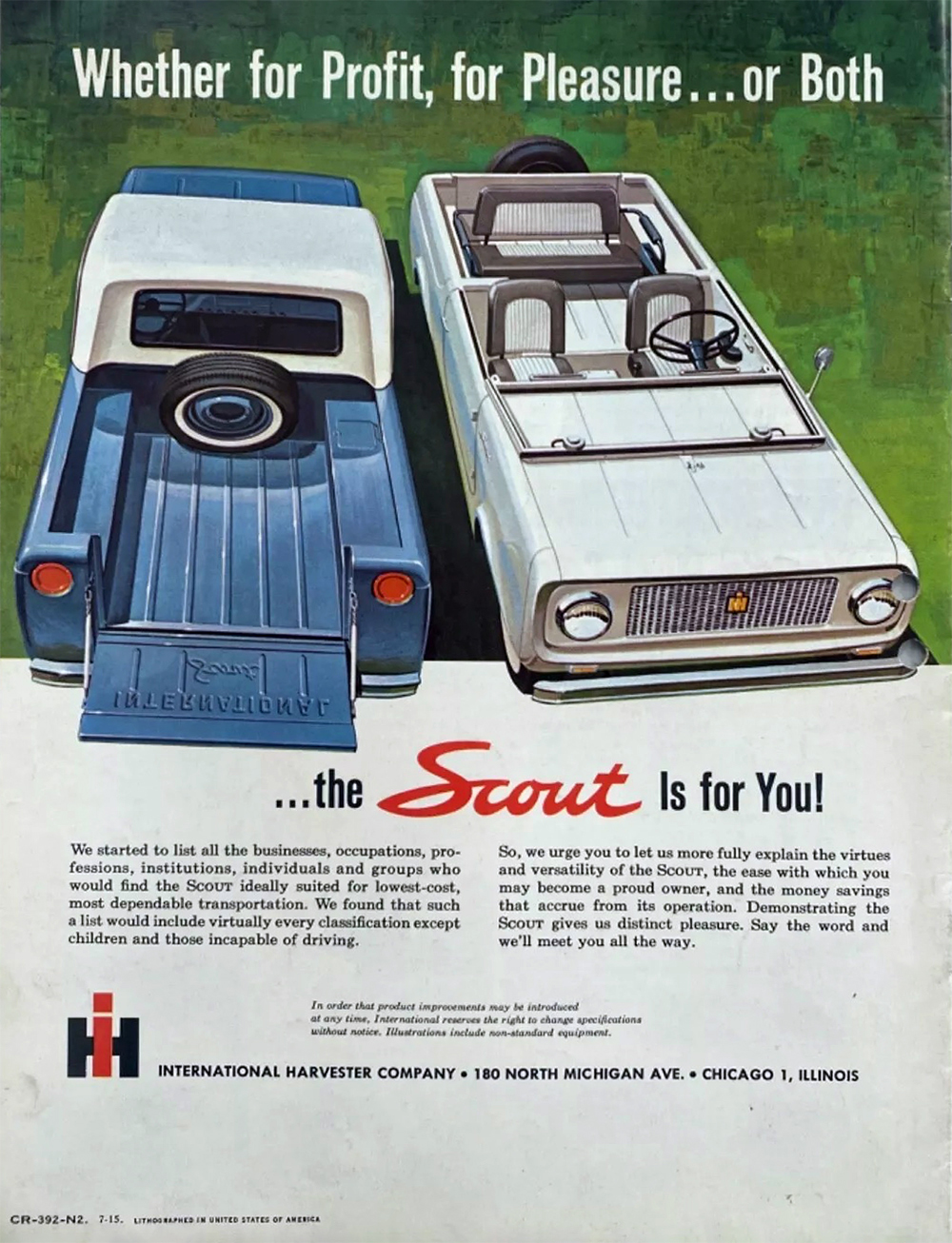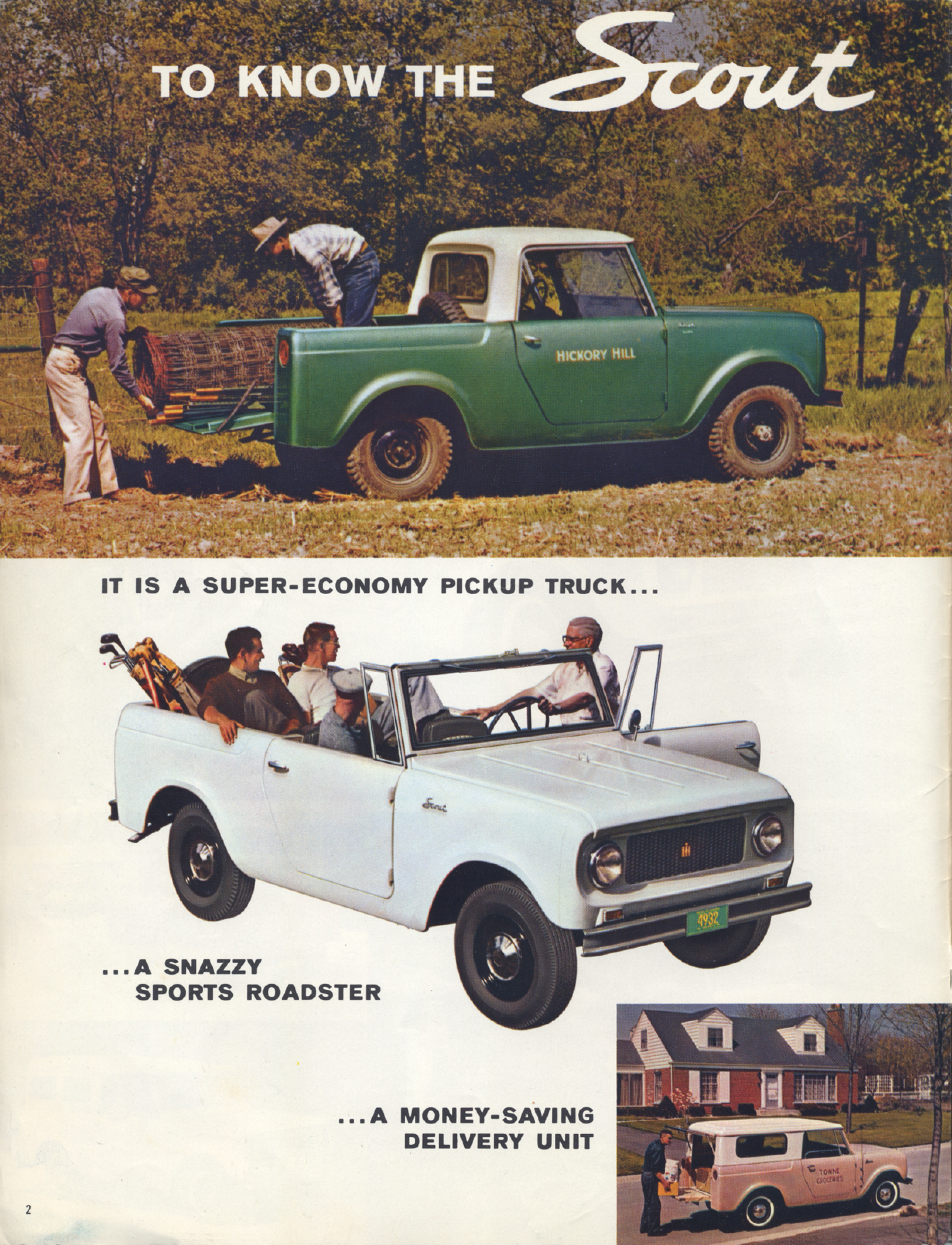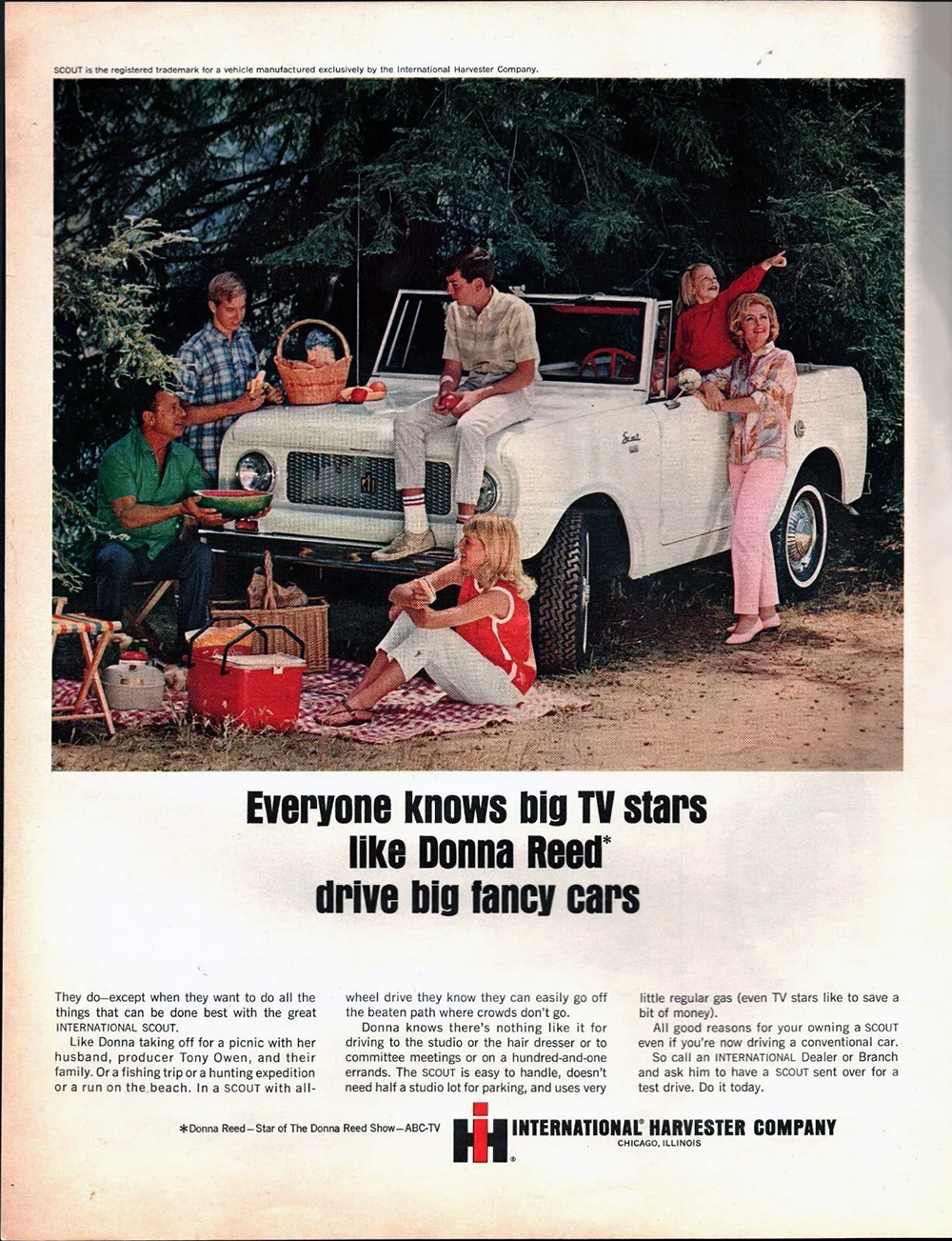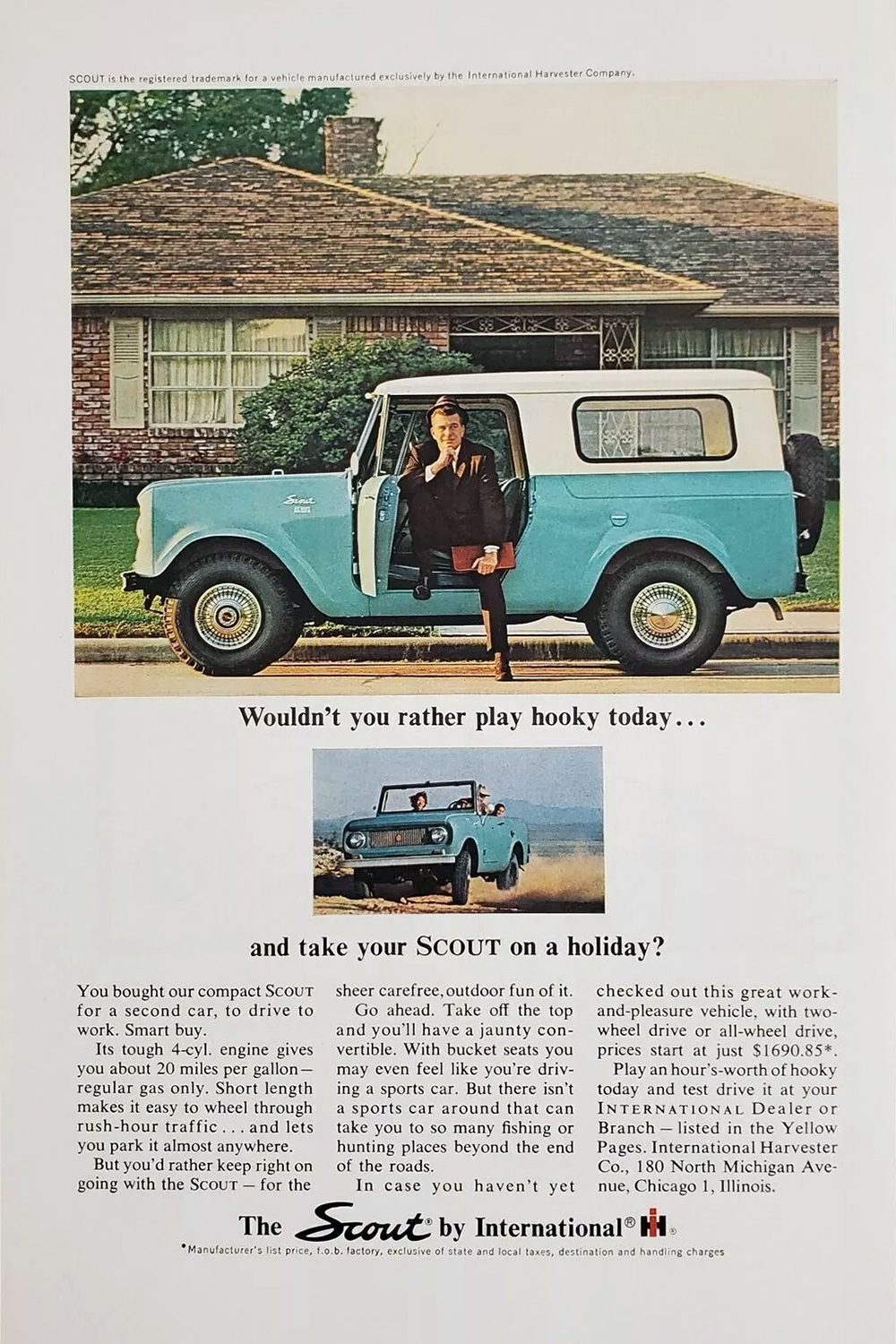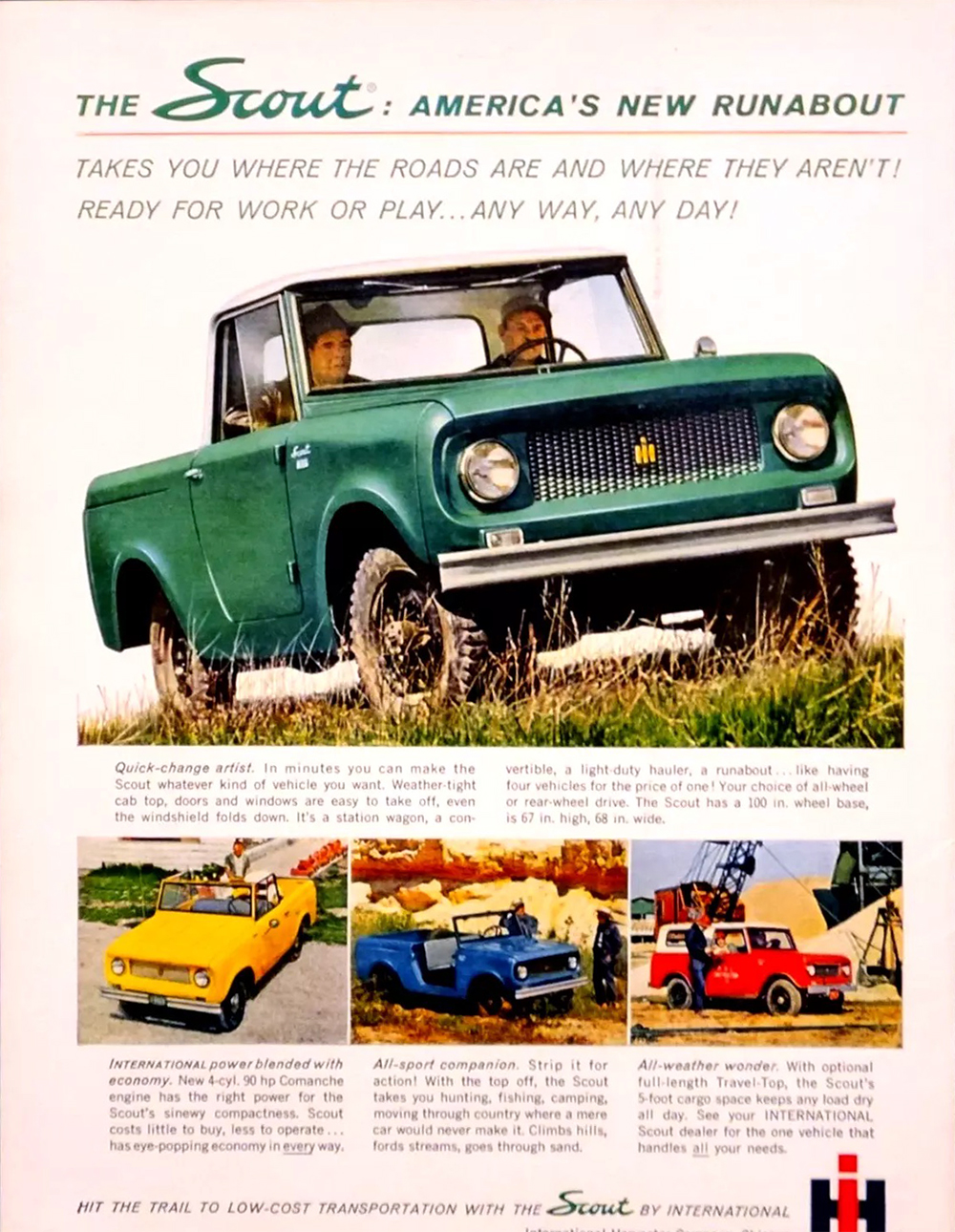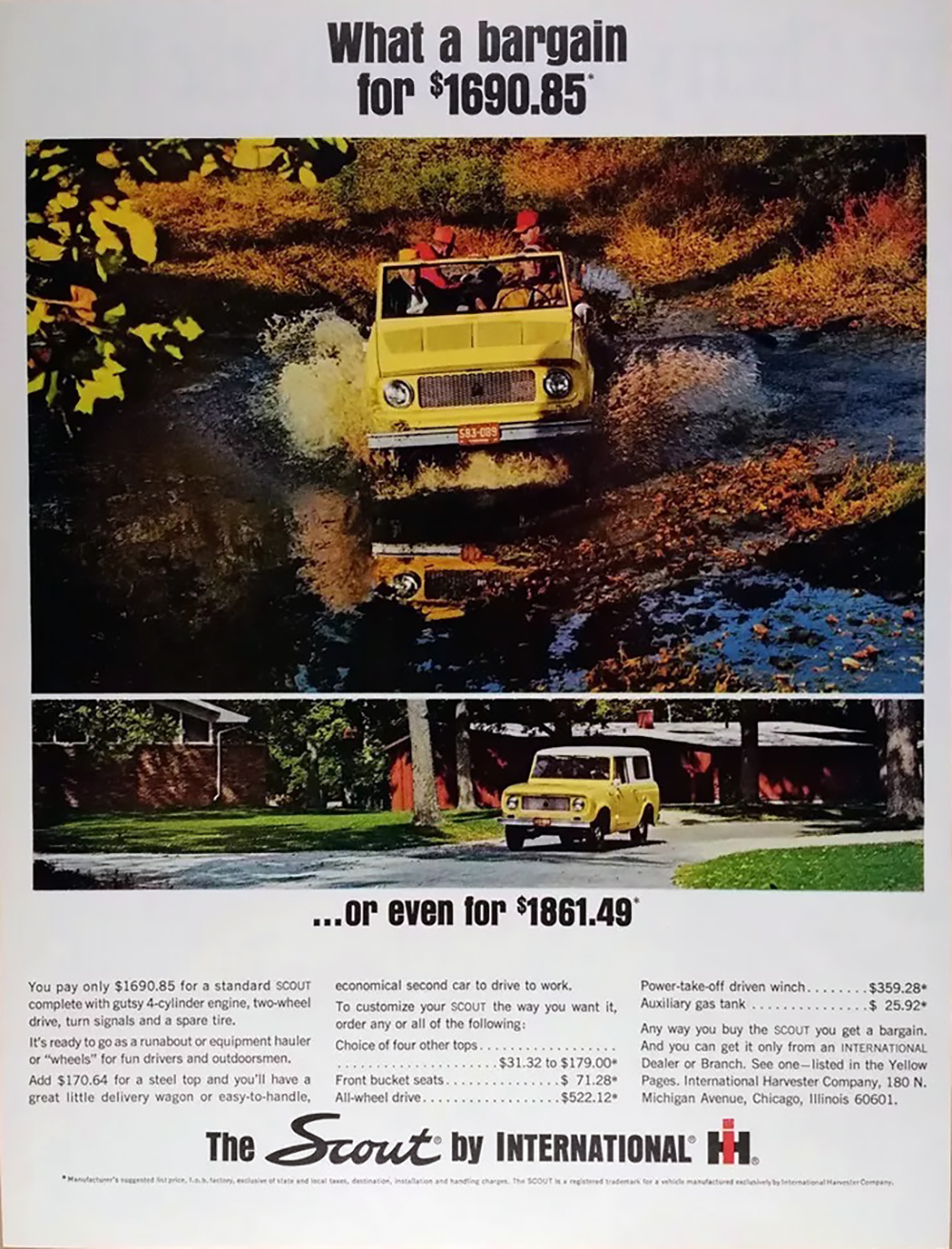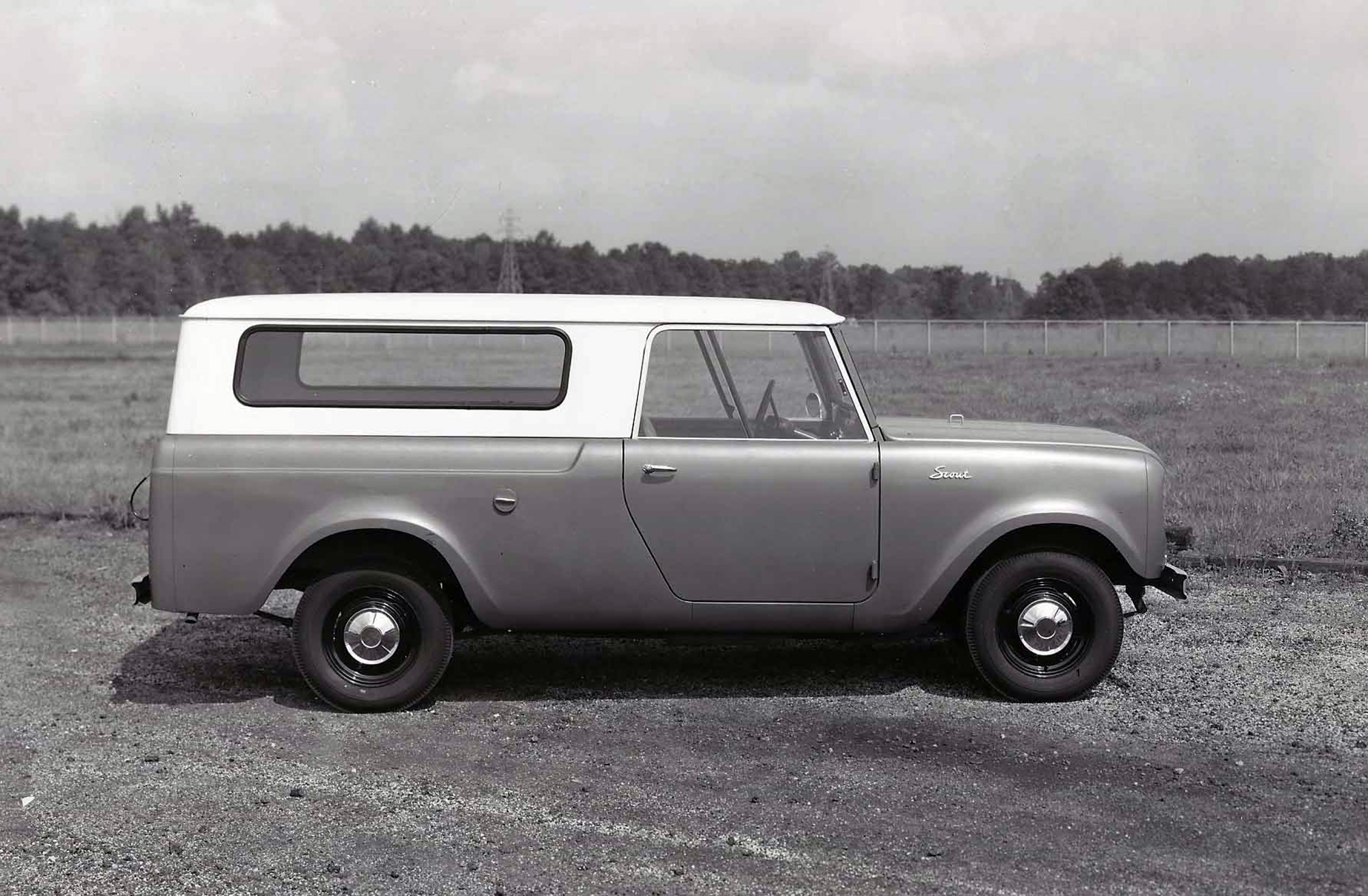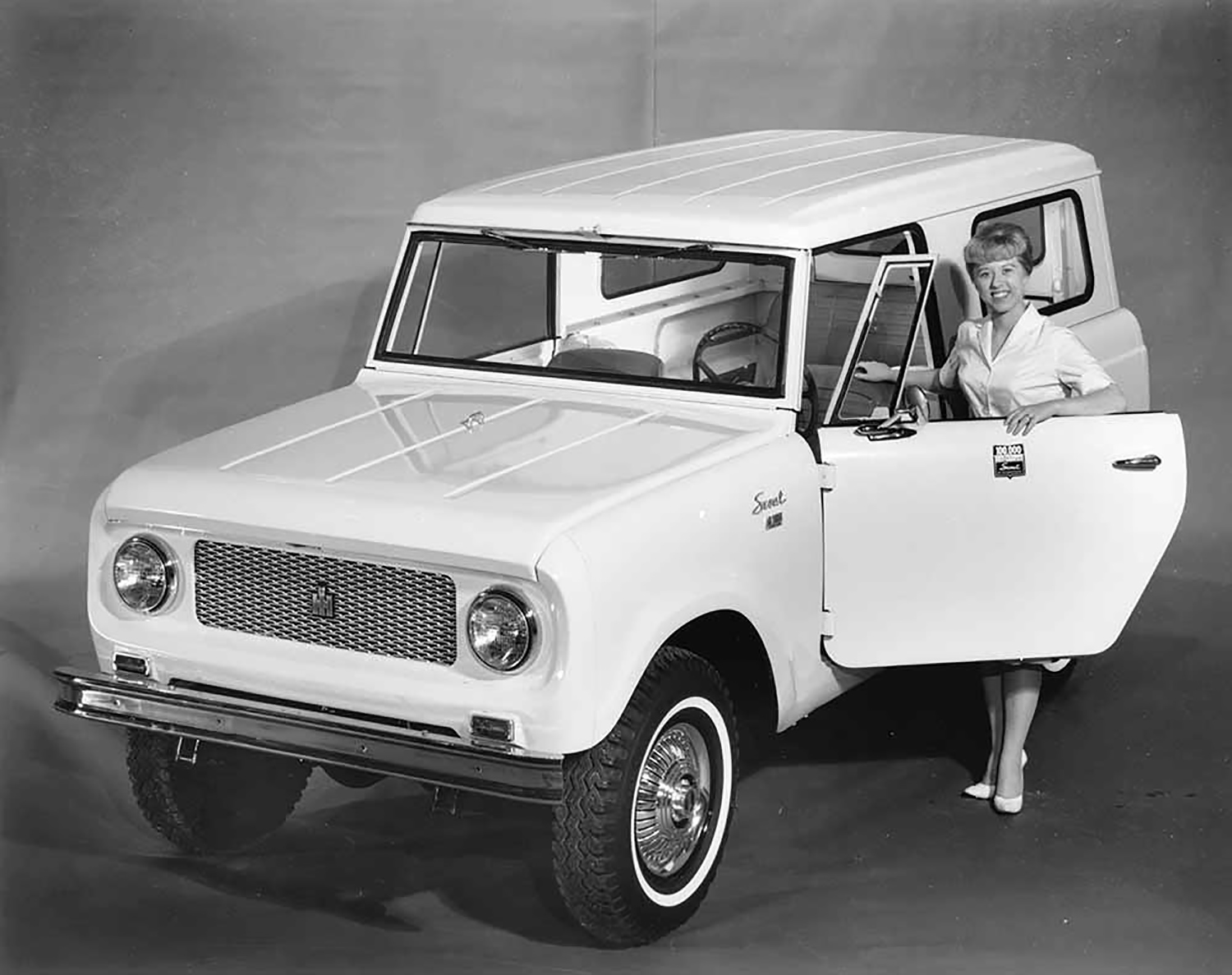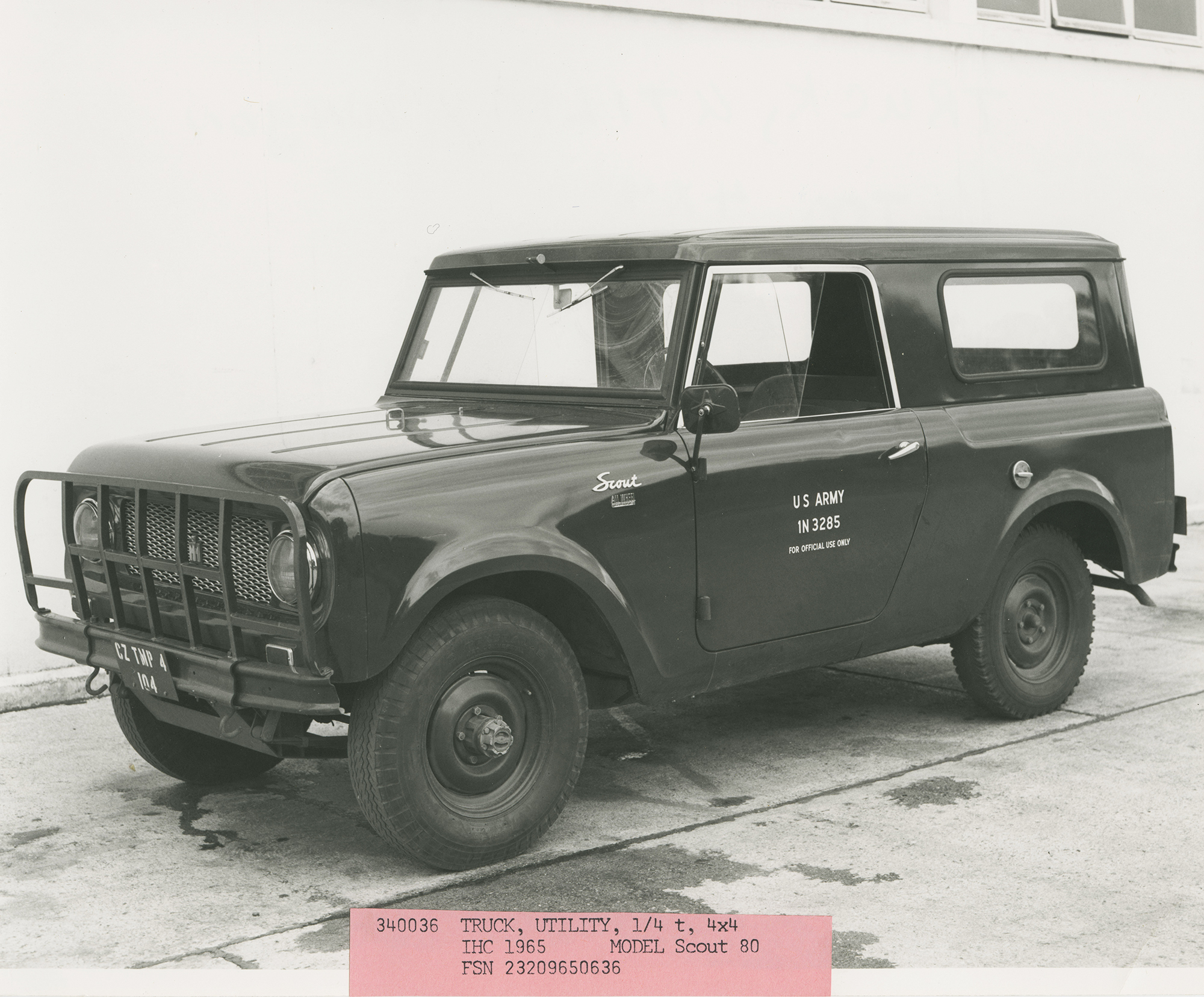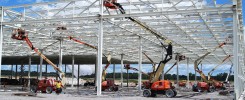TEXT BY: Jim Allen PHOTOS: SCOUT MOTORS & JIM ALLEN
1960-1965 Scout 80™ – Prototype to Production
The Scout 80 vehicle story began on an unrecorded day in 1958, when a group of International Harvester (IH) Motor Truck Division executives returned from a research junket out west. From that trip came an idea to build a light, compact IH® pickup in the same general size range as the Jeep® CJ, but with more comfort, capacity and robustness. While the Jeep wasn’t really a “truck” and carrying capacity was limited, both in volume and weight, it could get in and out of places a full-sized four-wheel drive truck couldn’t and they were very nearly the only option in their class. IH market research indicated potential annual sales of 6,000-10,000 units, so it was deemed worth a look.
By December of 1958, the Motor Truck Product Committee had approved a budget to investigate the possibility of a compact addition to the truck line. No fancy code names were used for the proposal, just “Small 4×4 Unit.” One of the people involved in fleshing out the idea was Ted Ornas, head of the IH Motor Truck Styling Department. In interviews, Ornas related his first exposure to the project came from W.D. Reese, head of the Motor Truck Engineering Department and it was a rather offhand request along the lines of, “See what you can come up with.” Of course, a vehicle is more than a styling exercise and Engineering also had to design and build the chassis but that was relatively simple and conventional. The Styling Department had a much tougher job designing a vehicle with visual appeal, especially when mandated to design something that could be built on a bare minimum of new body tooling.
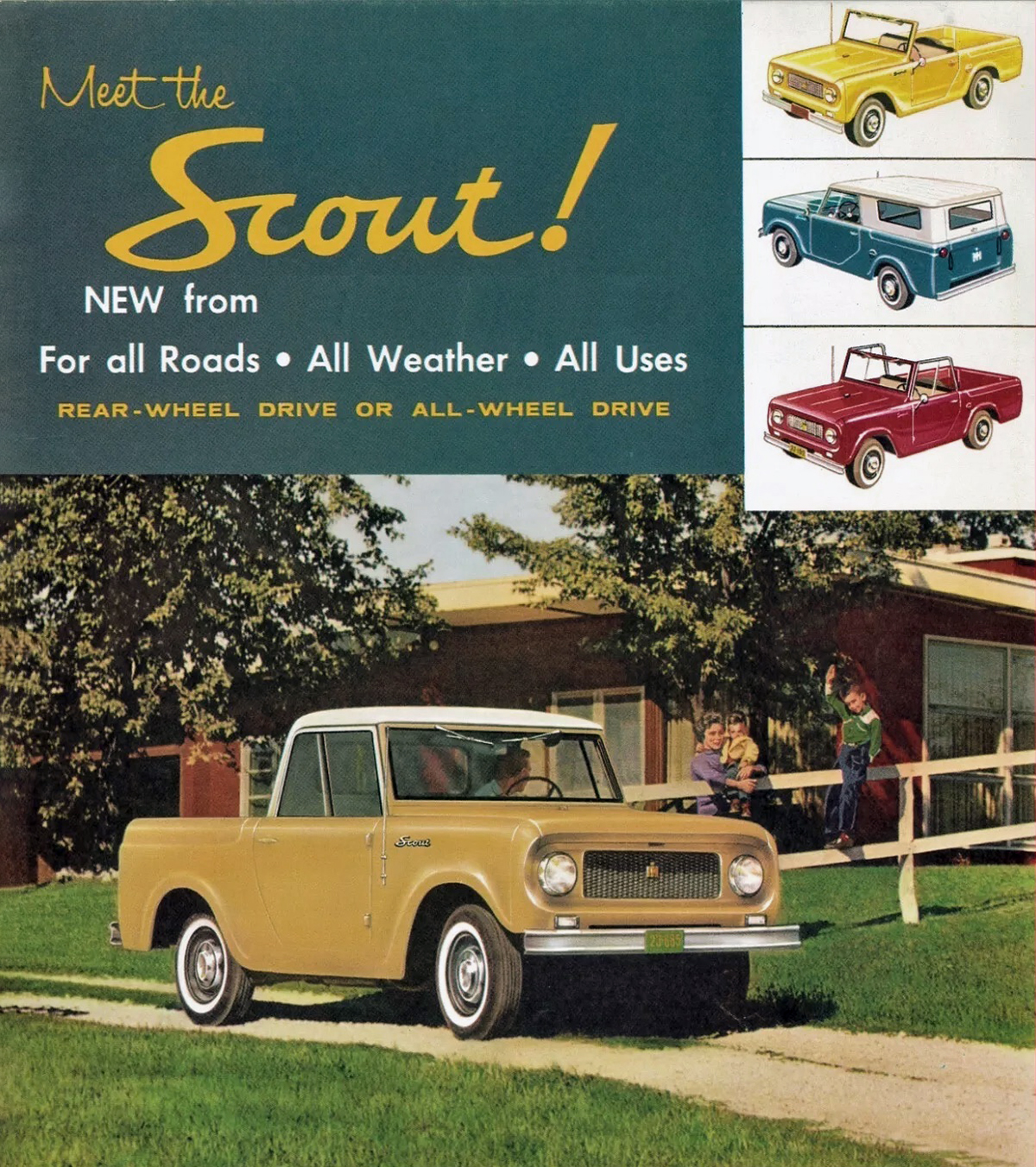
As the project made the rounds of decision-makers in the Motor Truck Division, Ornas reported submitting numerous styling ideas, none of which inspired much excitement. Two things happened to move the project along. The first was an idea to build the bodies out of Royalite, an early thermoplastic product. In theory, bodies could be made stylishly and cheaply once molds were produced. Once the production limitations on angles and curves were lifted, the second element came from a sketch done one evening on the Ornas family kitchen table. When Ornas showed it around, the waning excitement for the Small 4×4 Unit was revitalized.
From that first sketch, a more coherent design was created, with Ted’s right hand man, Chuck McGrew, leading a charge towards a final design. Many renderings were produced and a scale model was built but plans changed after a hard lesson in reality. When tooling and production estimates came back from U.S. Rubber and Goodyear for Royalite bodies, the costs of a more lavish steel body didn’t look so bad. Plus, more market research on the possible sales numbers had moved upwards and Ralph Buzard, VP in charge of the Motor Truck Division, opened the checkbook to fund a steel body.
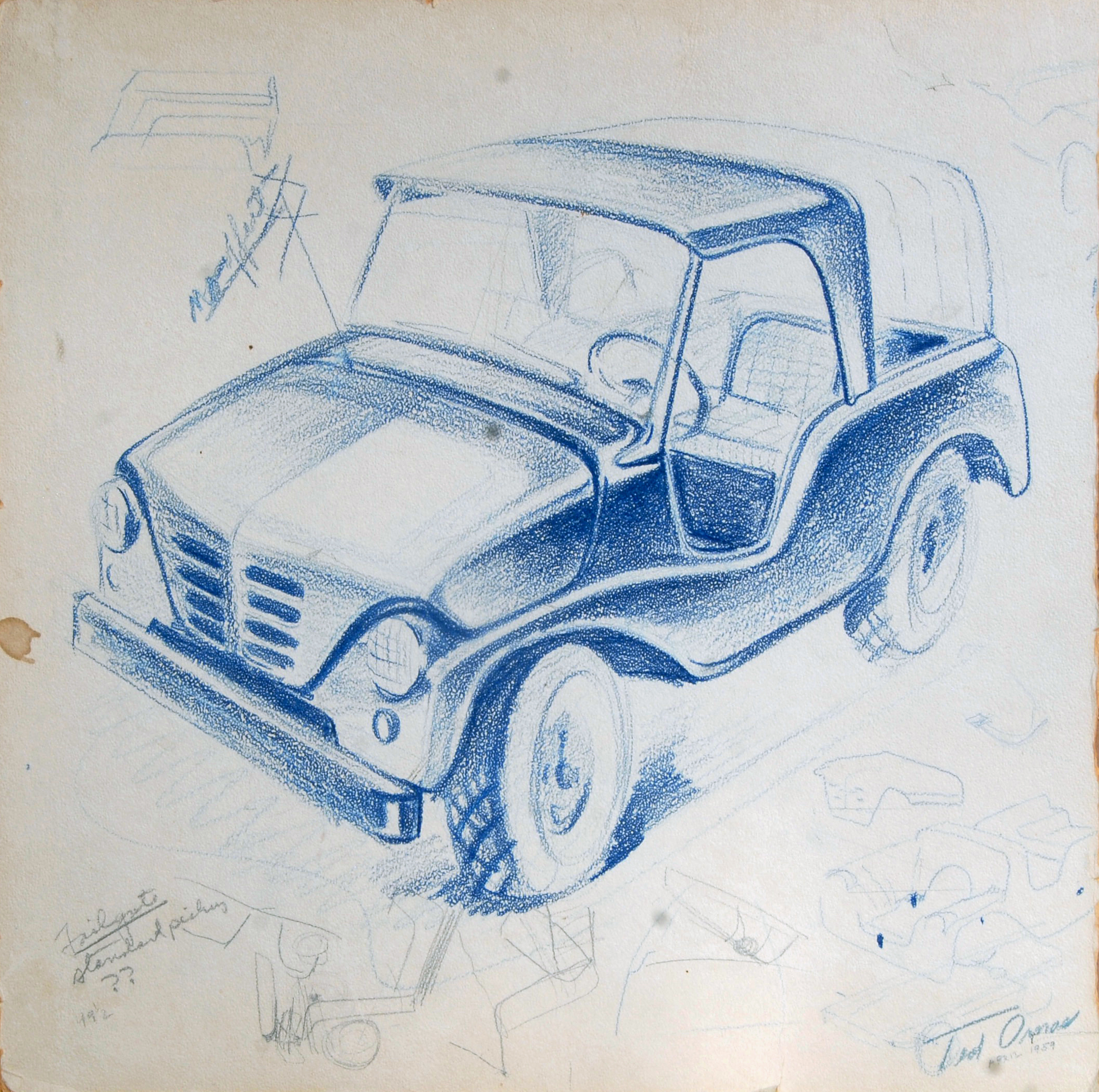
"From that trip came an idea to build a light, compact IH pickup in the same general size range as the Jeep CJ, but with more comfort, capacity and robustness."
UNDER THE SKIN
From the chassis engineering point of view, the Scout 80 evolved quickly. The backbone was a stout, fully boxed chassis manufactured by A.O. Smith that was several steps ahead of their Jeep competition for beef. The drivetrain was off the shelf and sourced outside the company. Though IH built many of their own transmissions and axles, nothing was compact enough for the Scout. The axles and transfer case came from Dana-Spicer and were virtually the same design as used in Jeeps. The 3-speed manual transmission came from Warner Gear (later known as Borg-Warner) and was similar to those used in Jeeps.
The engine was a problem, as IH had nothing suitable in house. They investigated outside-sourced powerplants and even discussed using the pint-sized and problematic 1.5L 51 hp Austin A-55 engine, already in IH service. It had been used in the recently introduced Metro-Mite urban panel delivery vehicle and quickly became a performance and durability problem. To solve this, IH engine designers took a page from the late ’50s Pontiac Trophy-4 engine development and sliced one bank of cylinders off an International V8, giving them a four-cylinder engine about 20 percent more powerful than Jeep’s. The added bonus was that it used 80 percent of the parts used in the V8s and could be built on the normal V8 engine tooling.
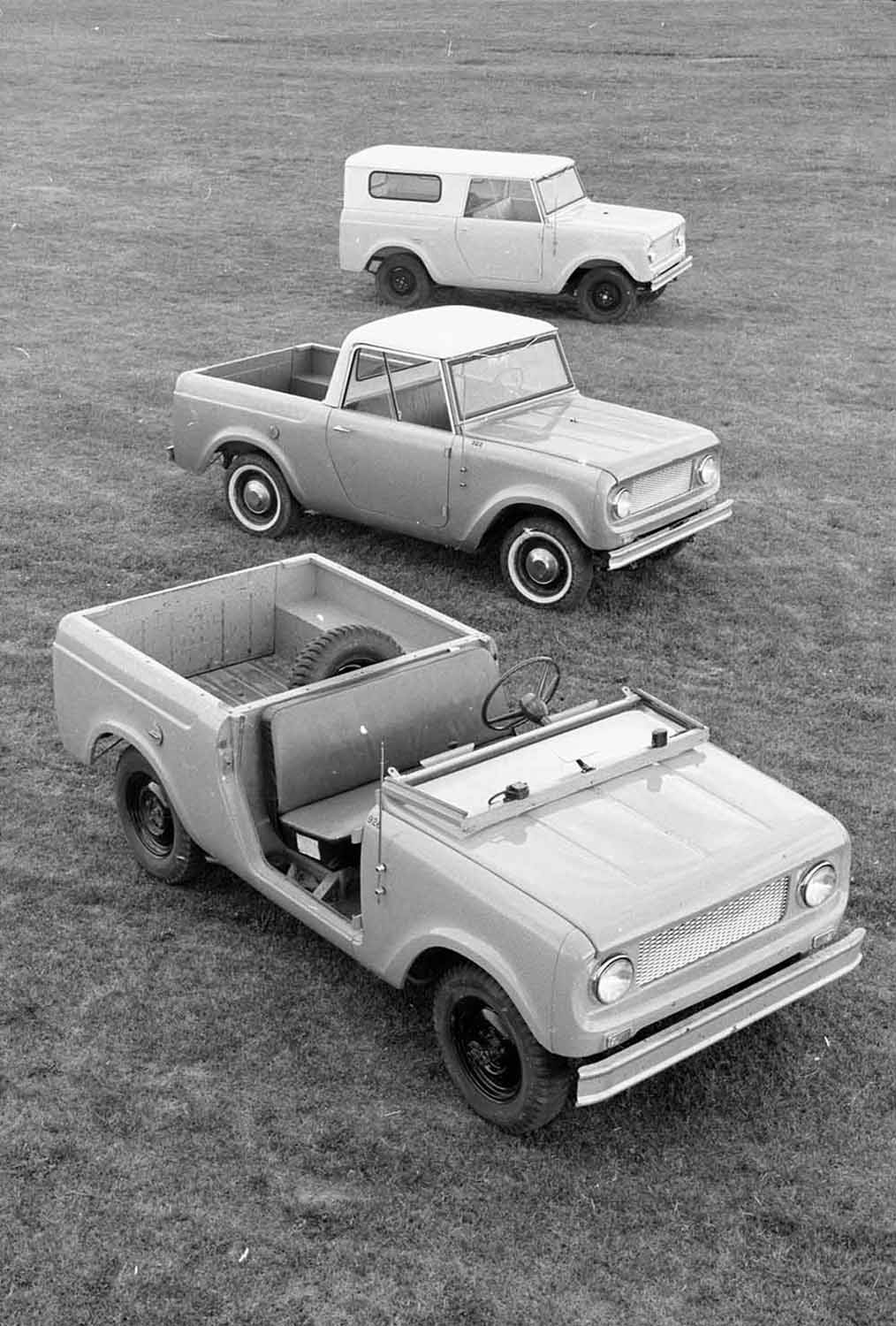
THE FIRST PROTOTYPES
Product planning documents describe five hand-built prototypes built for tests. In looking at the surviving images, only four can be identified by the experimental vehicle numbers painted on them but legend has it one was badly damaged and totaled its first time out when an executive tried his hand at off-roading and rolled it several times. Of the four known units, two can be identified as mounting the A-55 Austin engine and two have early or prototype versions of the 4-152 slant four. Two were four-wheel drive and two were two-wheel drive.
The prototypes were tested extensively, one being taken to the Phoenix Proving Grounds for hot weather and extensive off-road testing. Reliability issues aside, the A-55 was very quickly nixed from the lineup due to the woeful lack of power. There are hints in the product planning documents that using the A-55 for the 4×2 Scout trucks was considered but sanity prevailed and the 4-152 was adopted for all Scout vehicles.
TOPPING IT OFF
As mentioned earlier, the Scout was conceived as an addition to the pickup line, set to debut for 1961 with the new C-Line light trucks. Near the end of the development process, Ralph Buzard remarked on the lack of cargo security for the open bed. It was anticipated the two-wheel drive variant of the Scout 80 might find popularity as a light, urban delivery truck. The example Buzard used was liquor deliveries. In order to safeguard the booze and make Ralph happy, a bed cover was designed but it became clear it made more sense to develop a full-length top option. That went onto the fast track and was barely ready in time for production.

ALL IN THE NAME
One of the other developments necessary for a new vehicle is a catchy marketing name. There isn’t any documentation on names other than “Scout” being considered. Stylists used “Spartan” a few times as well as “Scouter” on renderings but what a stylist puts on a few of the hundreds of design proposals do not necessarily represent they were in consideration because marketing names were chosen outside of the Styling Department. It’s known “Scout” was on the A-list from the beginning but there were trademark issues. “Scout” was owned by Bruce Nodwell, a Canadian manufacturer of tracked carriers used on snow, ice and tundra. Though named “Scout,” these vehicles were more commonly called “Nodwells” so Bruce wasn’t averse to selling the trademark. In early 1960, a deal was reached and IH bought the trademark for $25,000…. $5,000 a letter, as Bruce Nodwell used to joke. That’s about $260,000 in 2023 dollars when adjusted for inflation.
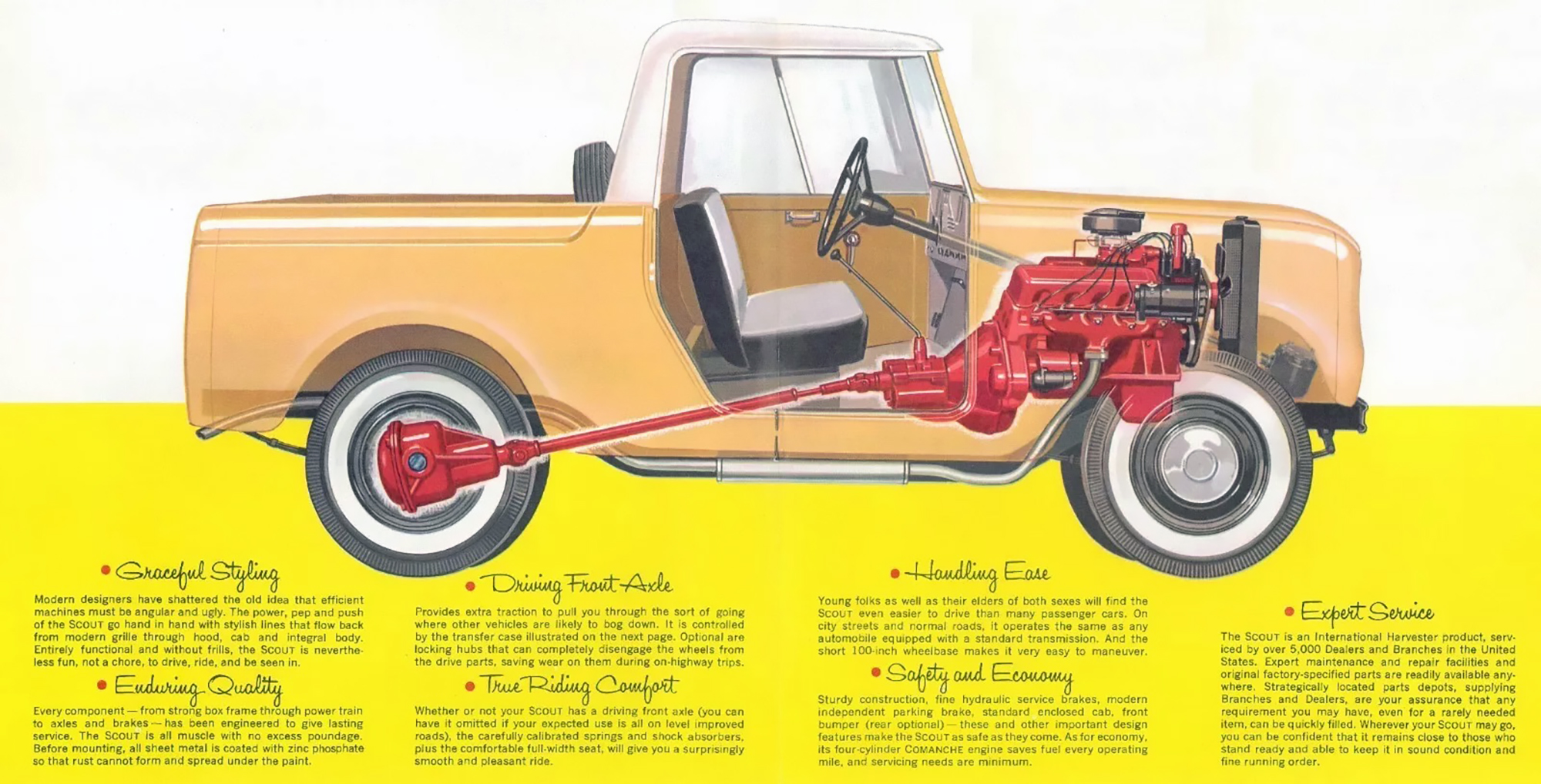
THE SCOUT BRAND DEBUTS
The Scout 80 was announced on November 21, 1960, and it was to be offered in two or four-wheel drive, as an open-topped roadster, small pickup called the Cab-Top or with full-length top called the Travel-Top. Though “station wagon” was bandied about to describe the full-top version, because the Scout 80 had a permanently mounted bulkhead behind the seats preventing rear passenger access, that was a very arguable use of the term.
As listed in the first product info packet, options were few and most of those were functional. You could get a Ramsey power take-off winch, better tires, tow hooks, a rear bumper, a rear Powr-Lok limited-slip differential, dual 11-gallon fuel tanks and a larger battery, but the comfort and convenience options consisted of a heater… yes it was an option… and armrests. The dealer could install a few more items like a radio and floor mats. No, this wasn’t exactly the lap of luxury.
Production started December 1, 1960, at a slow pace as the line was tuned. In the first quarter of 1961, production rose to slightly above 160 units per day but that wasn’t enough to satisfy demand and for a good part of the 1961 model year, demand for Scouts exceeded the supply.
EVOLUTION
The Scout 80 almost instantly expanded beyond the vocational goals set by International. To this point, IH trucks had been a bit player in the mainstream part of the U.S. automotive market but good fortune made the Scout perfectly placed to compete in a growing outdoor recreational market. Vehicles in this new market would soon get a name… Sport Utility Vehicles.
Evolution began immediately. The first lessons learned were that demand was overwhelmingly for 4x4s and Travel-Tops. Further, customers wanted a true station wagon with a rear seat accessible from the front. The development of a station wagon became a top priority and adjustments were made to production to reflect customer preference for the 4×4 and Travel-Top. The 1961 model year would show the highest annual percentage of 4x2s and Cab-Tops over the entirety of Scout production. Demand for Travel-Top Scouts became so strident that IH had to increase production of the top itself to offer it as a parts kit for dealer to update sold Scout 80s. It was significant enough an issue that a special bulletin was sent to dealers telling them how they could order top kits.
The beginning of 1962 would show many substantial changes, but one alteration was a slight change of identity. The marketing people saw advantages in distancing the Motor Truck Division identity from the International Harvester™ trademark and become just “International®.” As a result, the badging on trucks changed. The original Scout 80 tailgate had sported a large “IH” logo. This was changed starting in February 1962 production to “International” over a script “Scout.” Towards the end of the model year, the first iteration of roll-up windows appeared as an option over the original sliding glass.
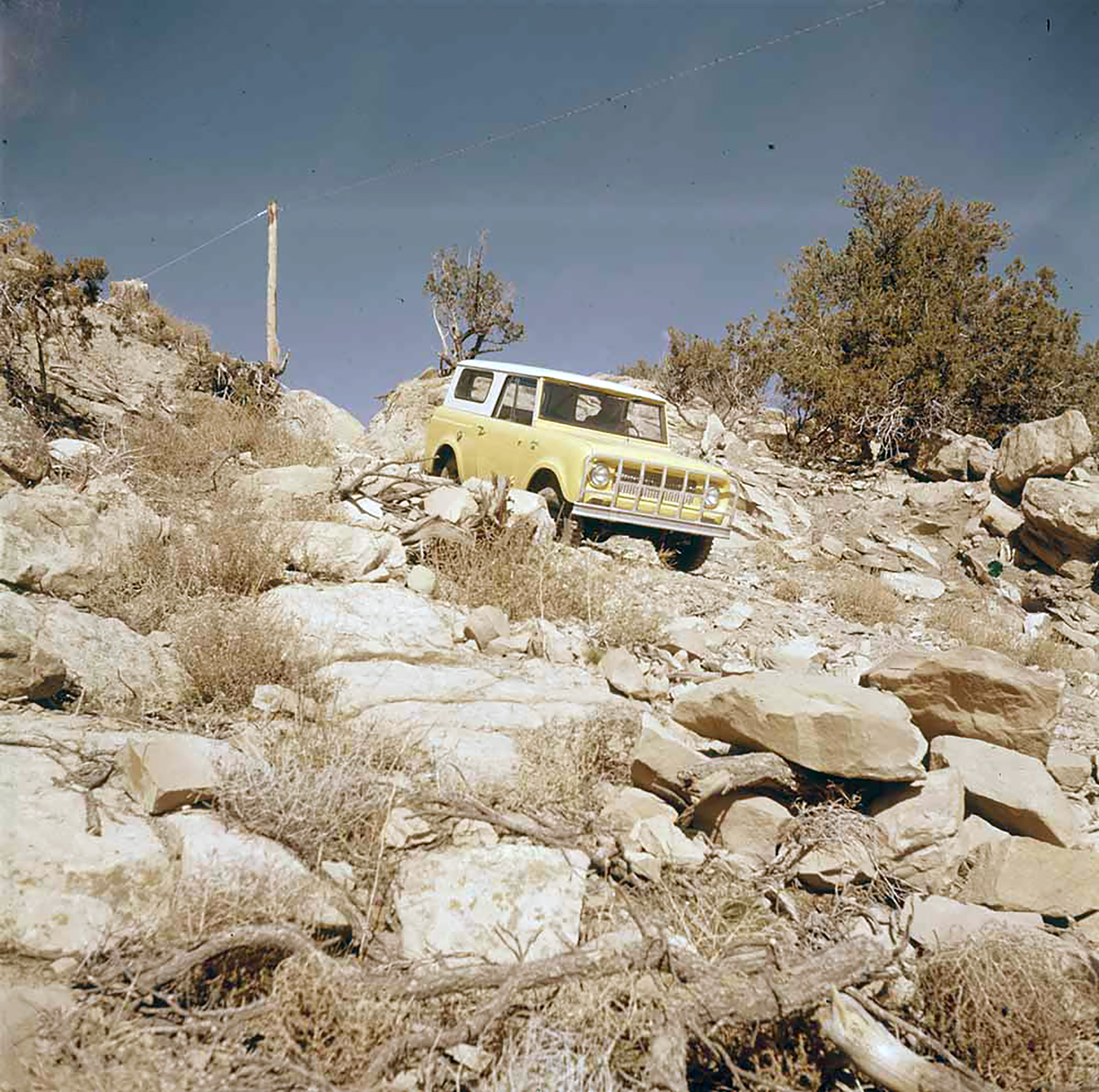
Also, starting in July, 1962, production, an Interim Conversion was introduced which removed the bulkhead behind the seats. This was a bit of a factory hack job but combined with bucket seats and a separately option rear seat, the Scout 80 became a true station wagon. This conversion was offered in a kit so dealers could do the same conversion on existing Scout 80s. A new body design with a removable bulkhead debuted early in 1963, allowing all Scouts to be configured as either Cab-Tops or Travel-Tops…. at the factory, or down the road by a dealer or purchaser. On top of that, several new tops were introduced, a couple of soft tops and the Panel-Top, which eliminated the rear side windows. Right hand drive was introduced for ’62, opening new overseas markets. One of the bigger ones became Australia, where the Scout 80 made a good splash, though sales were hampered by high prices due to import duties and the cost of shipping.
The 1963 model year brought many other improvements to the Scout 80. Among the most sought after was the final version of roll-up windows to replace the original sliding glass. The rear windows were enlarged and top sealing was improved. The heating, defrosting and ventilation system was improved. The body received substantially better rustproofing. Mechanically, the Scout 80 acquired a rear axle option in the form of a substantially stronger Spicer 44 rear axle, along with a new 4.88:1 axle ratio option. Larger, more effective brakes came along at the same time and a stronger front axle housing was introduced.
Few changes came for 1964 but towards the end of the year, a completely new Scout special model was introduced, the Red Carpet Series. This was the first “Dolled-Up” Scout and it signaled a sea change for International and a march towards improving the everyday comfort and convenience. The Red Carpet was followed up for 1965 with the Champagne Series that came with a host of new, more exciting paint color choices.
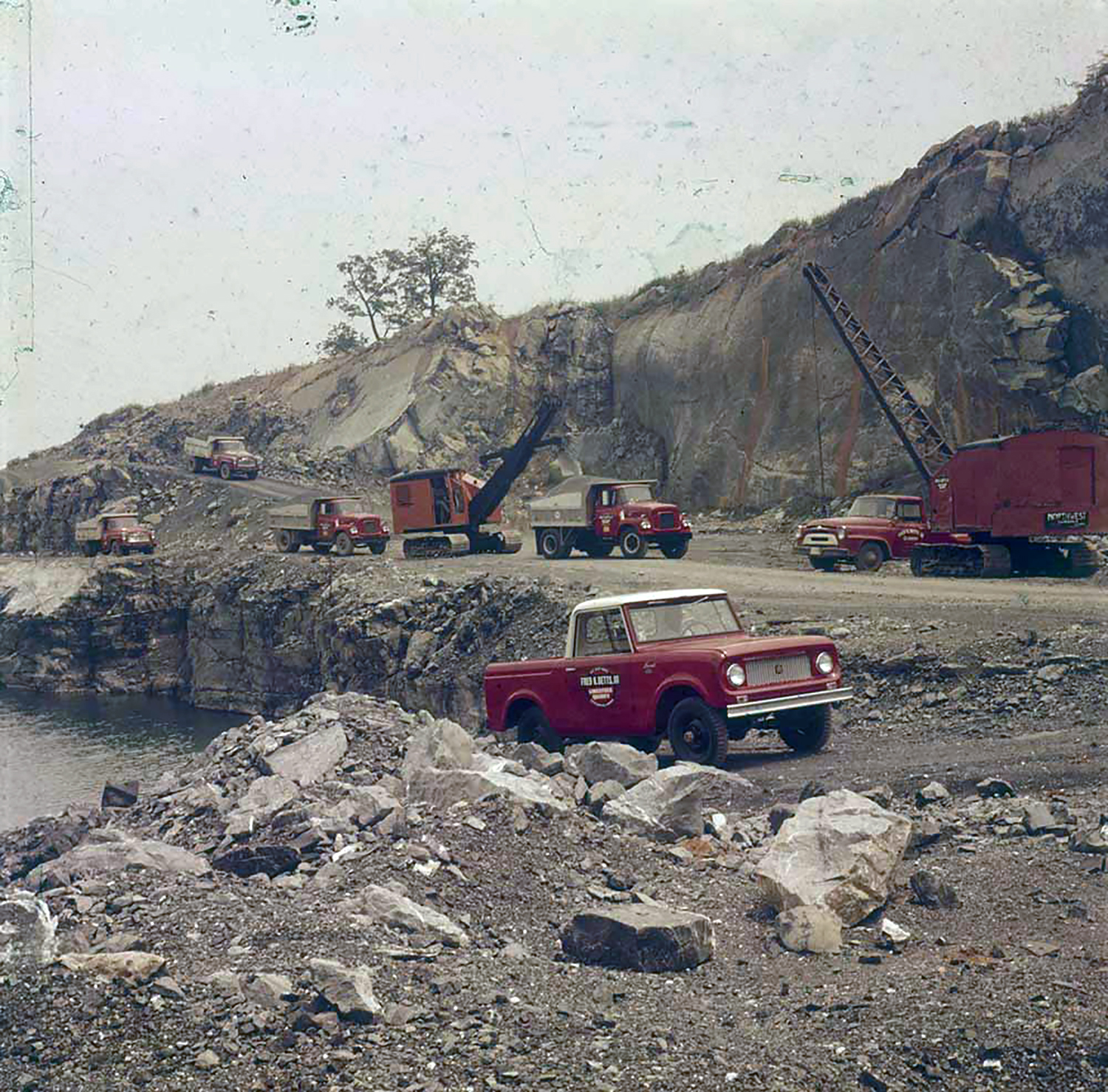
POWER UP
As the Scout 80 was winding down and development of the upcoming new Scout 800 models was nearing completion, the Ford® Bronco® was introduced. The Bronco had a standard 170 ci six and optional 289 ci V8 putting the Scout 80 behind the power curve. At the nearly same time, Jeep introduced a 225ci, 160 hp V6 as an option. Plans began to upfit the new 800 line with a V8 but starting in 1963, stopgaps were considered to up-power the Scout 80 four-cylinder. The newly designed Borg-Warner electronic fuel injection system was fitted to two test Scout vehicles. Also a BD220 OHV six was swapped into a Scout 80 for tests. It was a 220 ci overhead valve six, the smallest engine option from the pickup lines, that made 112 hp and 194 lbs-ft of torque. The three test Scouts were taken to Denver, Colorado, for tests and customer evaluation. The Rocky Mountain states were one of the best Scout markets, but also one of the largest sources of low power complaints due to altitude. Customer and dealers in the region were surveyed after driving the test units and the votes came in for the six… better yet the larger 240 ci version. The sixes were problematic for many reasons due to packaging and that IH was on track to discontinue the engine family in the near-ish future, so IH went in another direction.
The final answer was a turbocharged version of the 152ci four which was about 20 percent more powerful than the existing four. IH partnered with Thompson Products for the turbo, a company who had developed the turbocharger for the Corvair Monza. The Corvair turbo was a relative success, but IH would wish for a do-over. The 111 hp, 4-152T turbo engine would be one step forward and two steps back. The engine made good power but was hampered by significant drivability problems and warranty issues. Though intended as a short-term option, it was rather shorter than desired with only about 1,000 turbo kits were purchased and not all of them were installed and sold.
The last Scout 80 vehicles were built on October 29, 1965, for a total of about 130,000 units. That was a big number for a single model by IH standards, so the Scout was deemed a success as it underwent a major upgrade into the 800, set to debut late in ’65 as a ’66 model.

Visit our Scout Community forum and join the conversation on this story.

